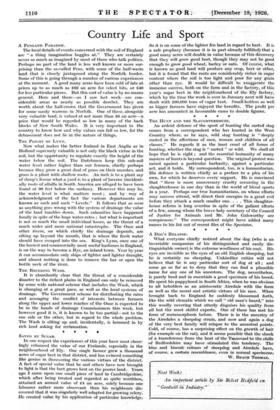SAVED HY SUGAR.
In one respect the experiences of this year have most cheer- ingly enhanced the value of our Fenlands, especially in the neighbourhood of Ely. One single farmer grew a thousand acres of sugar beet in that district, and has evinced something like genius in discovering the various virtues of the district. A fact of special value that he and others have now brought to light is that the beet grows best on the poorer land. Years ago .I came upon one small piece of land in Cambridgeshire, which after being treated and regarded as quite wcirthless, attained an annual value of £4 an acre, solely because one labourer rather more observant thin his neighbours dis- covered that it was singularly well adapted for growing celery. He created value by his application of particular knowledge.
So it is on some of the lighter fen land in regard to beet. It is a safe prophecy (because it is in part already fulfilled) that a good many acres will double, in value because of this discovery that they will grow good beet, though they may not be good enough to grow good wheat; barley'or oats. Of Conise, what is known as good land will produce any crop,-beet or other, but it is found that the roots are considerably richer in sugar content where the soil is too light and poor kw any grain other than rye: It would be difficult to exaggerate the immense success, both on the farm and in the factory, of this year's 'sugar beet in the neighbourhood of the Ely factory, which by the time the work is over-in January next'will have dealt with 200,000 tons of sugar beet. Smallholders as well as bigger farmers have enjoyed the benefits. The profit' per acre has amounted in favOurable cases to'double figures.










































 Previous page
Previous page